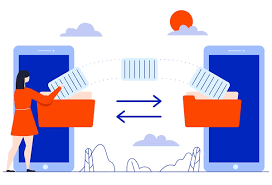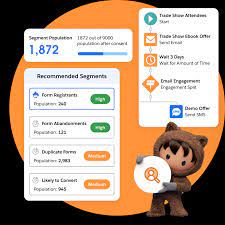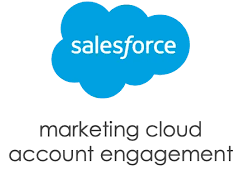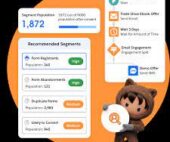Migrating from Zoho to Salesforce is a major undertaking that can significantly enhance a business’s CRM processes as it scales. To ensure a smooth transition, careful planning, data preparation, and execution are essential for accurate and efficient data transfer. In this guide, we’ll outline a step-by-step approach to migrating from Zoho to Salesforce, covering everything from pre-migration planning to post-migration follow-up.
Step 1: Pre-Migration Planning
1. Evaluate Your Business Requirements
Begin by assessing your current and future CRM needs. Identify critical functionalities in Zoho that you depend on and determine which Salesforce features will either replace or enhance them. Consider:
- Custom fields and objects
- Workflows and automations
- Reporting needs
- Third-party integrations
This evaluation ensures that Salesforce is configured to align with your business processes during the migration.
2. Assign a Project Team
Forming a dedicated project team is crucial for a successful migration. Include stakeholders from various departments, designate a project manager to oversee the migration, and enlist CRM specialists familiar with both Zoho and Salesforce. You might also consider hiring a certified Salesforce consultant or partner to assist with technical aspects.
3. Backup Your Data
Before starting the migration, back up your data from Zoho. Export all relevant information, including:
- Accounts
- Leads
- Contacts
- Opportunities
- Custom data fields
This backup ensures you have a complete copy in case any issues arise during the migration.
Step 2: Preparing Salesforce for Migration
1. Customize Salesforce to Fit Your Needs
Now is the time to tailor Salesforce to reflect your existing business processes. Review the custom fields, objects, workflows, and automations in Zoho, replicating or enhancing them in Salesforce. Salesforce’s high customization level allows you to optimize your CRM for your team’s specific needs.
2. Set Up Integrations
If you’ve been using third-party tools integrated with Zoho, establish the corresponding integrations in Salesforce. The Salesforce AppExchange offers a range of integrations, from email marketing platforms to accounting systems. Ensure the necessary tools are connected before migrating your data.
Step 3: Data Migration
1. Map Data Fields
To facilitate accurate data transfer between Zoho and Salesforce, map your Zoho data fields to their Salesforce counterparts. For instance, “Account Name” in Zoho should correspond to “Account” in Salesforce. Create equivalent custom fields in Salesforce if they exist in Zoho.
2. Cleanse Your Data
Data cleansing is vital to ensure only relevant, accurate, and up-to-date information is migrated. Remove duplicates, outdated contacts, and incorrect data from Zoho. This step streamlines the migration process and enhances the quality of your Salesforce database.
3. Choose a Migration Tool
Select an appropriate tool for migrating data between CRMs, such as:
- Salesforce Data Loader: A native tool for importing, exporting, and deleting large volumes of data.
- Third-party tools: Services like Talend, MuleSoft, and Skyvia specialize in data migration solutions from Zoho to Salesforce.
Depending on your data’s complexity, choose a tool that provides additional support, such as mapping or automation features.
4. Perform a Test Migration
Conduct a test migration using a subset of your data before proceeding with the full migration. This allows you to verify that everything transfers correctly and identify any issues with data formatting, relationships between objects, or custom fields. Adjust your mapping and migration processes based on the test results.
Step 4: Full Data Migration
Once you’re satisfied with the test migration results, proceed with the complete data migration from Zoho to Salesforce. This process may take time, depending on your data‘s size and complexity, so plan for downtime or staggered migrations to minimize disruptions to your team’s workflow.
Step 5: Post-Migration Setup and Testing
1. Validate Your Data
After the full migration, verify that all data has been transferred accurately. Check for discrepancies between Zoho and Salesforce records, ensuring that relationships (e.g., contacts linked to accounts) remain intact.
2. Recreate Automation and Workflows
Re-establish any automations, workflows, or triggers that were functioning in Zoho within Salesforce. Utilize Salesforce’s automation tools, like Process Builder or Flow, to replicate these processes. Adjust them as necessary to leverage Salesforce’s advanced capabilities.
3. Train Your Team
Successful migration extends beyond data transfer; it’s crucial to ensure your team is equipped to use Salesforce effectively. Conduct training sessions focused on new features and workflows, providing documentation or cheat sheets to facilitate adjustment.
4. Monitor System Performance
Post-migration, monitor your Salesforce instance for any performance issues or data inconsistencies. Make necessary adjustments and ensure that integrations are functioning as expected.
Step 6: Post-Migration Follow-Up
1. Run Parallel Operations
Consider operating both systems in parallel for a brief period to confirm Salesforce is fully functional before phasing out Zoho. This allows your team to continue using Zoho if critical issues arise in Salesforce during the transition.
2. Optimize Your Salesforce Instance
Over time, identify opportunities to further customize and optimize Salesforce to meet your evolving needs. Regularly review workflows, automations, and reporting to fully utilize Salesforce’s advanced features.
Who Should You Work With
A successful migration from Zoho to Salesforce involves key stakeholders from various departments to ensure the new CRM setup aligns with company processes.
- Project Manager: Typically from the IT or operations team, this person oversees the migration timeline, resources, and communication, ensuring smooth execution and thorough testing.
- Sales, Marketing, and Customer Support Representatives: These stakeholders, as primary users of the CRM, should ensure their specific needs are addressed in Salesforce, including workflows, automations, and reporting capabilities.
- Data Analysts or CRM Specialists: Their involvement is crucial to oversee data accuracy, enhance reporting capabilities, and maintain a clean, organized database.
Typical Migration Timelines
The duration of a Zoho to Salesforce migration typically depends on your data’s complexity and the required customizations. For smaller businesses with straightforward CRM setups, the process may take 4 to 6 weeks, encompassing planning, data mapping, testing, and training. However, larger organizations with extensive custom fields, workflows, and third-party integrations may require 3 to 6 months. Allow ample time for thorough testing and validation to ensure data accuracy and system functionality before going live. User training and post-migration follow-up are also critical for a smooth transition.
Conclusion
Migrating from Zoho to Salesforce is a growth step in enhancing your company’s CRM capabilities and positioning it for future growth. By meticulously planning your migration, cleansing your data, and configuring Salesforce to meet your business requirements, you can facilitate a smooth transition and leverage Salesforce’s powerful features from day one. With the right preparation and support, your business will be well-equipped to scale, streamline operations, and achieve long-term success using Salesforce. If you need assistance with your migration, don’t hesitate to contact Tectonic for a quote.
🔔🔔 Follow us on LinkedIn 🔔🔔
Content updated September 2024.













